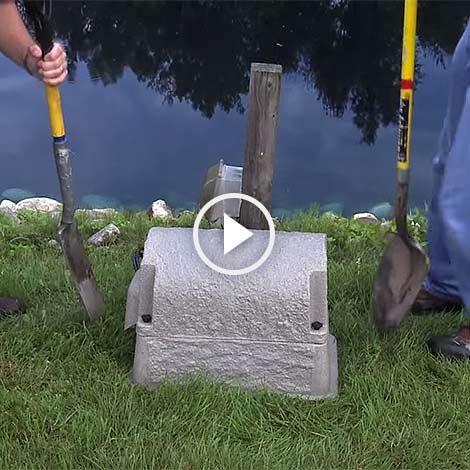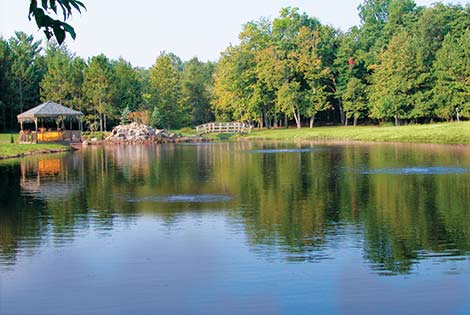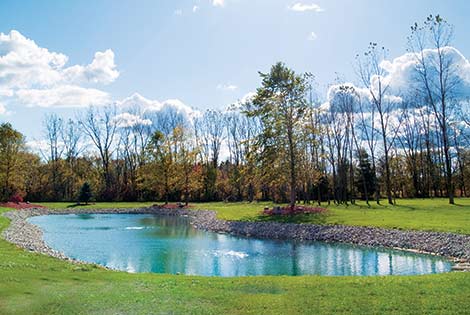Aeration infuses oxygen into the pond. Adding pond water aeration is not only beneficial for your fish, who need oxygen to survive, but will also improve your pond's ecosystem. Below are the top five reasons you should consider adding aeration into your pond, and the importance of aeration:
1. Aeration reduces pond muck
As a pond ages, nutrients accumulate at the bottom of the pond and become muck. Not only is muck unpleasant to see or feel between your toes, but it can also give ponds a bad odor and provide habitat for leeches. Aeration is important because it combats muck and other decomposing debris by increasing the dissolved oxygen and circulating the water. This pond water aeration encourages the colonization of beneficial aerobic bacteria that consume the nutrients to reduce existing muck build-up and prevent it from accumulating in the future.
2. Aeration improves water quality
Nutrients not only accumulate at the bottom of the pond to become muck, but they can also be suspended in the water column causing your pond to look murky. By reducing the muck and excess nutrients, increasing oxygen, and circulating the water, you will improve your water quality and clarity. Additionally, from pond water aeration, you'll see a reduction in algae and weeds since there will not be as many nutrients to fuel their growth.
3. Aeration boosts dissolved oxygen levels
Oxygen is needed from pond water aeration to sustain your fish, but it is also needed by your beneficial bacteria. Aeration is important because without oxygen, your pond will go into an anaerobic state. Anaerobic bacteria are not as efficient at breaking down organic material as their aerobic counterparts. Additionally, anaerobic bacteria produce carbon dioxide and hydrogen sulfide when digesting organic material, giving the pond a rotten egg smell. In contrast, beneficial bacteria produce a harmless gas when breaking down muck and debris. Incorporating aeration into the pond increases the amount of dissolved oxygen in the water keeping your pond functioning as a balanced aerobic system.
4. Aeration eliminates the thermocline
The thermocline is the border between the warmer, surface water and the colder, deeper water. Aeration is important because it circulates and mixes the water to eliminate these stratified layers by moving the cooler, oxygen-starved water to the pond's surface so it can become infused with oxygen. The warmer, oxygen-rich water then drops to the bottom of the pond to fuel your beneficial bacteria. With all this churning, the water temperature of a properly aerated pond will be no more than a few degrees difference throughout.
5. Aeration reduces the risk of a fish kill
Fish perish from time to time, but when many die at one time, it is often linked to low oxygen conditions. In the winter, the gases released when organic debris is decomposing can become trapped when the pond freezes over and reduce the oxygen available for your fish; if enough oxygen is displaced your fish will suffocate. Aeration is important because it will pump fresh oxygen into the pond and help to keep a hole in the ice to allow for gas exchange. In the spring and fall, turnover events due to stratified water can cause a fish kill. During a turnover event, a stratified pond rapidly mixes, depleting the oxygen from the surface water as it combines with the bottom oxygen-starved water. Pond water aeration will eliminate the thermocline and prevent spring and fall turnover.
Additional Information: In 2014, our Service Team used Airmax Aeration Systems and Airmax MuckAway to improve fisheries, reduce muck, and reduce vegetation growth at Fox Lake. For more data and the results of this study, please click here for the Field Study Report.
Last Updated: February 10, 2023


